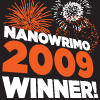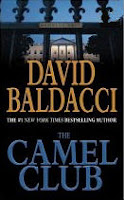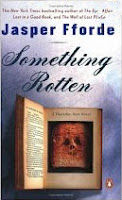Or rather, they were in ... eight days ago. More proof, if any was needed, that prompt blogging does not co-exist happily with exam periods. But I finally remembered to check the results of Kailana’s poll and was interested to see such a mix of books receiving three or more votes:
1. Pride and Prejudice by Jane Austen
It had to be, didn’t it? This was the first book I thought of when making my list.
2. The Lord of the Rings (including The Hobbit) by J.R.R. Tolkien
Another no-brainer.
3. The Chronicles of Narnia by C.S. Lewis
I have to admit, I have never read any of these. I did sit through adaptations on video at various stages in my primary school career, but I don’t recall paying much attention.
4. Anne of Green Gables series by Lucy Maud Montgomery
I loved these! I must have read the entire series several times over, and so much of it remains firmly in my memory.
5. Little Women by Louisa May Alcott
Another childhood favourite.
6. The Book Thief by Markus Zusak
I have to read this. Soon.
7. Jane Eyre by Charlotte Bronte
My second-favourite Bronte novel, second only to Wuthering Heights, and one I really must re-read soon. Preferably before the new adaptation hits the ABC; I read in the paper just this morning that the network has concluded a deal with the BBC and the new miniseries is on its way down under.
8. To Kill a Mockingbird by Harper Lee
I know this is much loved and lauded, but I don’t have fond memories of this book. Probably because I was forced to read it, dissect it, etc, in ... I think it was Year 9 English.
9. The Handmaid's Tale by Margaret Atwood
I love what I’ve read by Atwood, and this one most of all; chilling and dystopian and a great read.
10. Little House on the Prairie series by Laura Ingalls Wilder
Have I read any of these or not?
11. The Hitchhiker’s Guide to the Galaxy by Douglas Adams
I left this off my list because I didn’t want to include only one book from a series, and I haven’t read the whole series. I usually never read sci-fi, but Adams is my one exception and frequently has me in stitches.
12. Great Expectations by Charles Dickens
I know this sounds horrible, but, except for the very short A Christmas Carol, I have never finished a book by Dickens. Oliver Twist, Great Expectations, A Tales of Two Cities ... I’ve given up on them all.
13. The Bible
I can certainly see why this made the Top 28: a bestseller for centuries, changed the face of the world, a comfort and inspiration to millions (or is that billions?). But personally, this isn’t something I would ever touch, except out of morbid curiosity.
14. Complete Works of Shakespeare
And I thought I cheated!
15. Possession by A.S. Byatt
Another of the first books that came to mind. A wonderful and beautifully-written story.
16. Wuthering Heights by Emily Bronte
My favourite Bronte novel and also on my list.
17. The Blue Castle by Lucy Maud Montgomery
Sadly, one of the few Montgomerys I never read. I think perhaps I might have to correct that oversight.
18. The Black Jewels Trilogy by Anne Bishop
Never heard of it.
19. Summer Sisters by Judy Blume
Ditto.
20. Ender’s Game by Orson Scott Card
This one I have heard of, but have somehow never gotten around to reading. Time to add it to the Wanted list.
21. The Count of Monte Cristo by Alexandre Dumas
On my Wanted list; I’ve read and enjoyed The Man in the Iron Mask and The Black Tulip and would love to read this as well.
22. Sophie’s World by Jostein Gaarder
On my list.
23. The Scarlet Letter by Nathanial Hawthorne
In my TBR box ... somewhere ... probably buried under a dozen other volumes.
24. The Time Quartet by Madeleine L’Engle
I’ve heard of A Wrinkle in Time, but never read it and didn’t know there were more.
25. Twilight and New Moon by Stephenie Meyer
Heard of them, but for some reason they just don’t appeal.
26. Harry Potter series by J.K. Rowling
I’ve read and adored the first four, and have been trying for some weeks to track down a copy of Harry Potter and the Philosopher’s Stone to start all over again.
27. Anna Karenina by Leo Tolstoy
Another failed-to-finish. I should probably try again now that I don’t have Ms. Kennedy trying to shove it down the class’s collective throat.
28. Charlotte’s Web by E.B. White
How adorable was Wilbur? I’ve lost count of the number of times I read this growing up.
So of the Top 28, five were on my list and I’ve read some or all of another 11. A little over half; not
bad. I’m looking forward to seeing the list of books receiving one or two votes, which should be up once Kailana’s exams are over (I know that feeling!). There should be plenty more in there to add to the Wanted list.
























